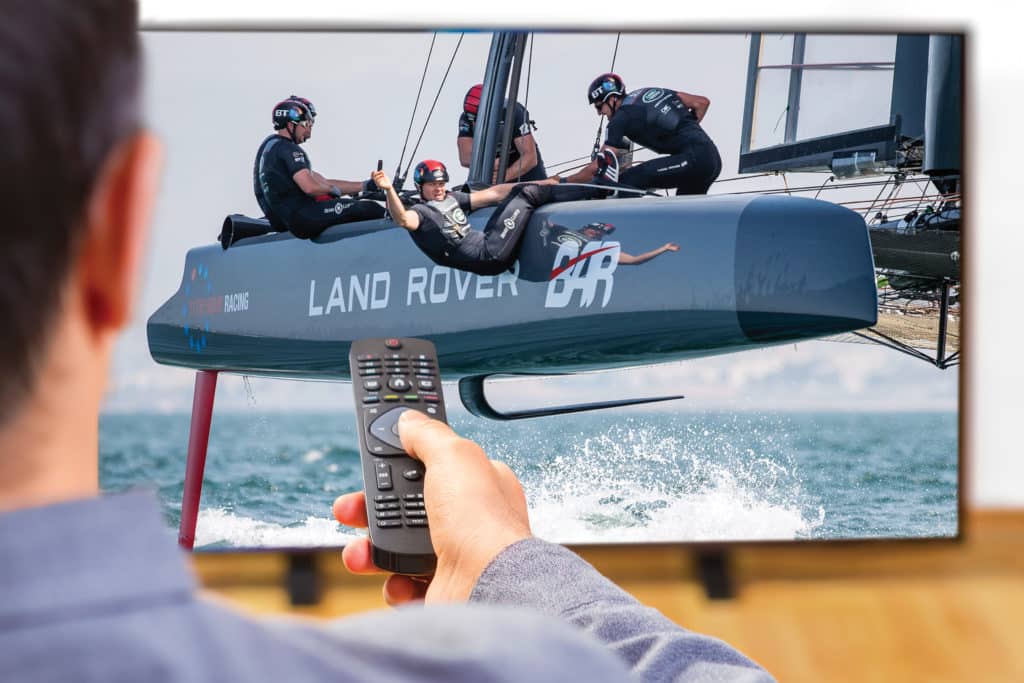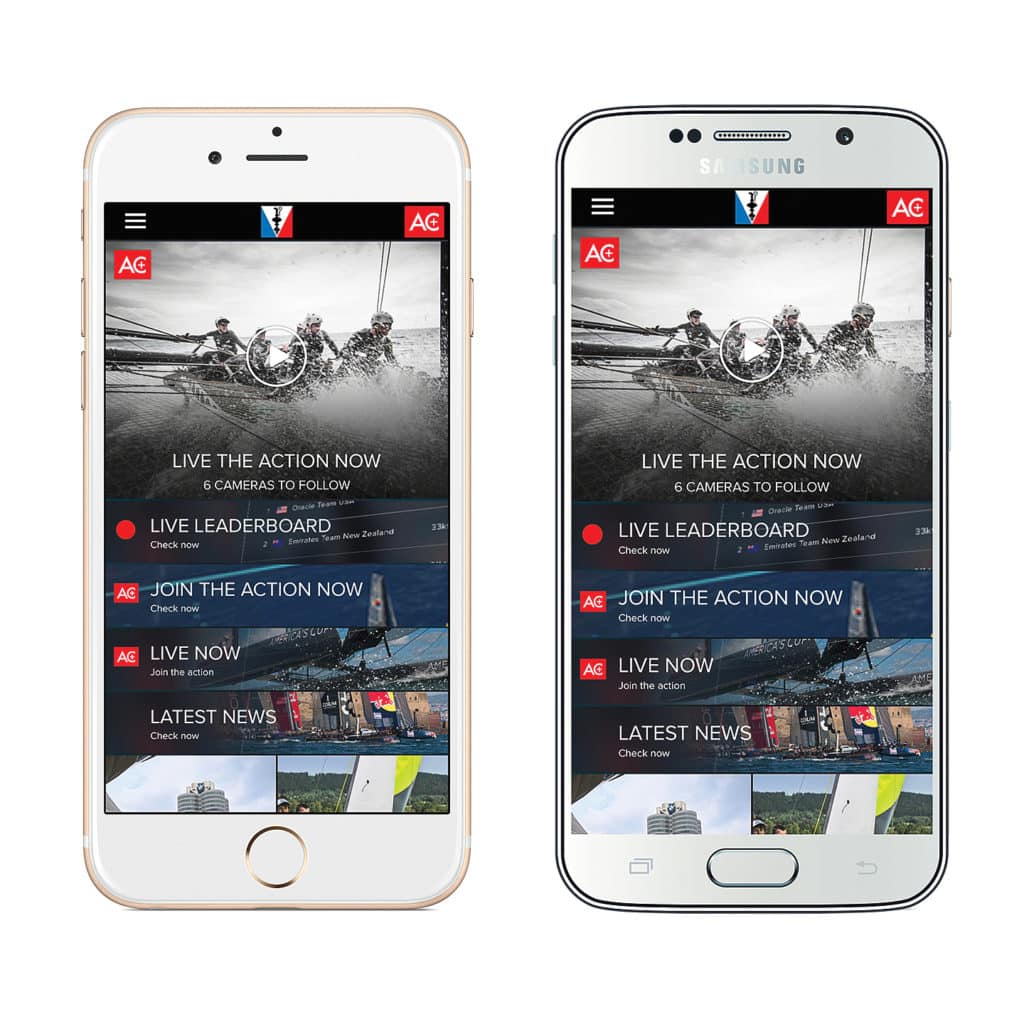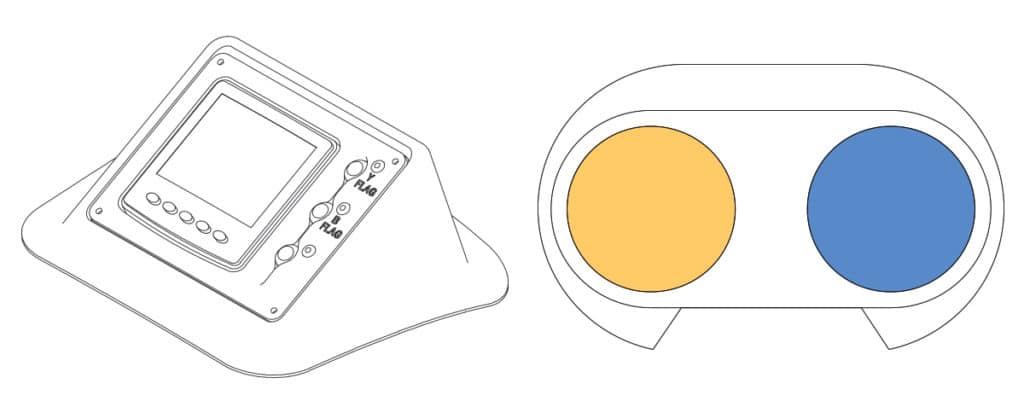
The year was 1987, and the 26th america’s cup was being contested off Perth, Western Australia. Dennis Conner — my childhood hero — and his Stars and Stripes team were unstoppable, but antipodean time zones and unreliable VCRs hobbled the American fans wanting to watch the battle. As a sailing-obsessed 11-year-old, I swore I’d someday witness the racing firsthand.
Fast forward to 2013, and I was invited aboard Emirates Team New Zealand’s hospitality boat for a day of racing spectatorship during the 34th America’s Cup. While the experience was plush, trying to see the entire racecourse from my low-slung vantage point was almost as vexing as programming the VCR.
Fortunately, modern onboard electronics and broadcasting capabilities will make next month’s 35th America’s Cup a spectacular onscreen experience for us all.
America’s Cup teams sail with sophisticated sensors, lightning-fast computers and communications equipment that tackle a complex list of requirements, from enabling sailors to “fly” their America’s Cup Class (ACC) foiling catamarans at top speed to letting all of us see it happen on any screen we choose. The media coverage involves a helicopter, a high-speed camera boat, shoreside infrastructure and GPS satellites. Each boat carries several electronics packages, including one that delivers performance-related metrics and another that facilitates the broadcast while helping teams comply with racing rules.
Unlike “normal” racing yachts that spec off-the-shelf electronics, America’s Cup teams have the budgets and brainpower to develop proprietary solutions. For example, where most Corinthian-level race boats might use a heading-reference sensor that’s accurate to 1 or 2 degrees, America’s Cup teams use boutique solutions that deliver accuracy to within one-tenth or even one-hundreth of a degree.
“All the teams’ electronics are developed for optimizing race tactics, performance analysis and coaching,” says Mark Sheffield, director of AC LiveLine, which provides technical services to all teams, plus identical racecourse management and media-related equipment to all teams, and then renders the final racing broadcast.
Sheffield says teams commonly develop proprietary solutions for logging and analyzing onboard data, and for generating real-time load metrics from the wingsail, hydrofoils, hydrofoil-control mechanisms and rudders. Also, beyond the critical wind speed and directional information, ACC catamarans require sensors that measure the precise ride height, cant and rake of the daggerfoils and rudders to ensure safety and speed.

While these sensors provide mission-critical information, AC35’s rules require that sailors — not algorithms — make and execute all decisions. So, while teams can innovate sensors that measure, for example, wind sheer along the wing’s leading edge and use this information to help the trimmer decide whether the wing needs adjustment, “It cannot be used to close a control loop,” Sheffield says.
Beyond the electronics required for efficient flight aboard an ACC catamaran, additional AC LiveLine-supplied equipment helps with racecourse management and the broadcast. Each boat carries a race-communications display that presents critical information, including the race committee’s countdown timer, the distance to the next racecourse boundary, and text messages from the umpires. Additionally, the boats carry colored lights that indicate real-time rules violations. These lights, as well as all position information coming on and off the boats, rely on telemetry, which gives umpires and skippers highly accurate situational awareness while facilitating the broadcast.
Anyone who witnessed the jaw-dropping footage from the 34th America’s Cup is familiar with the augmented-reality graphics that made the broadcasts understandable and exciting, even for novice audiences. AC LiveLine graphics gave viewers key information such as the field of play (boundaries, starting line and finish line), turning marks and leeward gate circles, as well as lines that delineated the leading boat. According to Sheffield, AC35’s broadcasts will use similar, but refined, versions of those graphics.
“The key to the integration is the high-precision tracking solution we employ,” says Sheffield, adding that the success of AC LiveLine depends on knowing precisely where the boats are on the racecourse. “The quality of the positional data via the tracking and telemetry system [during AC34] meant that the data was not only sufficient to deliver the graphics solution for the broadcast, but also — with its 2-centimeter accuracy — could be used to officiate the racing and provide [race-management] tools.”

Achieving 2-centimeter positional accuracy while capturing stunning video imagery requires GPS antennas and receivers, telemetry antennas and data radios, tracking equipment, inertial measurement units, and wiring harnesses and batteries. Most of these are fitted in the hulls, inside protective Pelican cases. Each boat also carries customized video cameras and microphones, and sailors are mic’d, allowing producers to jump to individual crew members and cameras for detail-level shots. A helicopter offers a bird’s-eye view of the racecourse using a Cineflex gyro-stabilized camera to create graphics. A high-speed catamaran provides on-the-water footage using a FLIR gyro-stabilized camera.
AC LiveLine built a robust telemetry network that blankets the racecourse by using shoreside, fixed-mount antennas. All information is transmitted on a specially licensed frequency to reduce the possibility of signal interference. AC LiveLine’s offices are housed in shipping containers and portable cabins, and a production truck contains the mobile production control room. Graphics are layered atop video footage using each boat’s precise position information and high-speed computers to create a broadcast with only one second of lag time.
As Sheffield says, “The amount of pieces that all need to work faultlessly to make a live production is amazing.”









